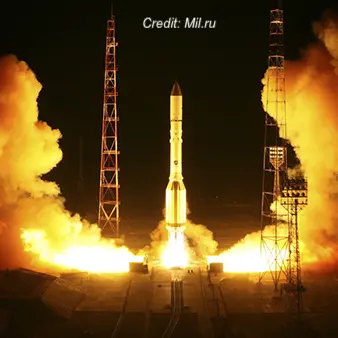/
MexSat-1
Launch Failure
Liftoff Time (GMT)
05:47:38
Saturday May 16, 2015
Mission Details
Read Article
Launch Notes
The first two stages worked correctly, but, at H0+497s, a dysfunction of the RD-0214 engine of the third stage interrupted the flight. The third stage, the Briz-M stage and the MexSat-1 satellite partially burned during their re-entry into the atmosphere, but debris crashed in the krai of Transbaikalia, 25km northwest of the village of Yamarovka.
MexSat-1
Boeing announced in December 2010 that it has received a contract for approximately $1 billion from the government of Mexico to deliver an end-to-end satellite communications system. The system, known as MEXSAT, will consist of three satellites, two ground sites, associated network operations systems, and reference user terminals. MEXSAT will provide secure communications for Mexico’s national security needs, as well as enhanced coverage for the country’s civil telecommunications. Under the contract, Boeing will deliver a complete turnkey satellite system comprised of Boeing 702HP geomobile satellites MEXSAT-1 and MEXSAT-2 and one extended C- and Ku-band satellite, MEXSAT-3, which will provide fixed satellite services from geosynchronous orbit. MEXSAT-3 is scheduled to launch first, at the end of 2012. Each Boeing 702HP satellite will supply 14 kilowatts of power through five-panel solar array wings that use high-efficiency, ultra triple-junction gallium arsenide solar cells. Both satellites will carry a 22-meter L-band reflector for mobile satellite services, complemented by a 2-meter Ku-band antenna.
Geostationary Transfer Orbit
1 Payload
5,325 kilograms
Rocket


Manufacturer
KhrunichevPrice
$65.00 million
Rocket
Height: 58.18m
Payload to Orbit
LEO: 21,000 kg
GTO: 6,900 kg
Liftoff Thrust
10,027 Kilonewtons
Fairing
Diameter: 4.35m
Height: 15.26m
Stages
4
Launch Site
Stats
Proton-M
90th
Mission
3rd
Mission of 2015
2015
26th
Orbital launch attempt